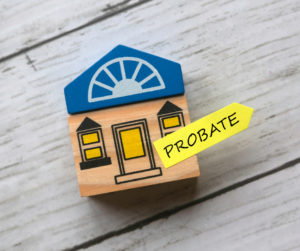by Attorney Curtis A. Edwards, J.D.
A. Edwards, J.D.
Probate—a legal process that can often appear complex and intimidating. In this article, we aim to provide a clear and concise explanation of the probate process, shedding light on its purpose and the steps involved. Whether you’re a personal representative, beneficiary, or simply seeking to better understand the probate process, this article will help demystify the fundamentals of estate administration.
What is Probate?
Probate is a “court-supervised” legal procedure that oversees the administration of a deceased person’s estate, including the distribution of assets and settlement of any outstanding debts. In light of the court’s jurisdiction over the probate process, it ensures that the wishes outlined in the deceased’s will (if one was created) are respected and that the estate administration is carried out in accordance with applicable laws. Probate also provides a forum to resolve any disputes that may arise during the distribution process.
Initiating the Probate Process
The probate process typically begins with the filing of a petition in the appropriate court. The court validates the will, if one exists, and appoints a personal representative consistent with the deceased’s will to administer the estate. If there is no will, the court will appoint a personal representative to oversee the distribution of assets based on the laws of intestacy (default rules for distribution when no will exists).
Inventory and Valuation of Assets
The personal representative’s first task once probate has been initiated is to create an inventory of the deceased person’s assets. This includes identifying and documenting all real estate, bank accounts, investments, personal belongings, and other assets. It’s important to assess the value of these assets accurately, often with the help of appraisers or experts, to determine their fair market value.
Notifying Creditors and Settling Debts
During the probate process, the personal representative must notify creditors of the deceased person’s passing. This provides an opportunity for creditors to make claims against the estate for any outstanding debts. The personal representative will then review and settle any valid claims using the assets of the estate. Resolving debts is a crucial step in the probate process to ensure that the remaining assets can be distributed to the beneficiaries.
Distribution of Assets
Once all debts, taxes, and expenses have been settled, the personal representative proceeds with the distribution of assets. This involves transferring ownership of assets to the beneficiaries as outlined in the will or according to the laws of intestacy. It is important to follow the proper legal procedures to ensure a smooth and lawful transfer of the assets of the estate.
Challenges and Timeframes
The probate process can be affected by various factors that may cause delays or complications. These may include disputes among beneficiaries, complex asset structures, or disagreements over the validity of the will. The duration of probate can also vary depending on the size and complexity of the estate.
Conclusion
Probate, though initially daunting, is a necessary legal process that ensures the proper administration and distribution of a deceased person’s estate. Understanding the basic steps involved in probate can provide clarity and help individuals navigate this process more confidently. It is advisable to seek professional legal guidance from an attorney specializing in probate law to ensure compliance with Wisconsin law and to address any unique circumstances that may arise during the probate process.
If you have any questions or are interested in learning more about this topic, please contact Lin Law LLC at (920) 393-1190.
